Teen Recalls Being 'Gauzed Up Like a Mummy' After Rare Disease Left Her 'Burning from the Inside Out' (Exclusive)
“I vividly remember thinking, ‘Am I going to die?’” Paige LaCombe tells PEOPLE about her experience as a young girl
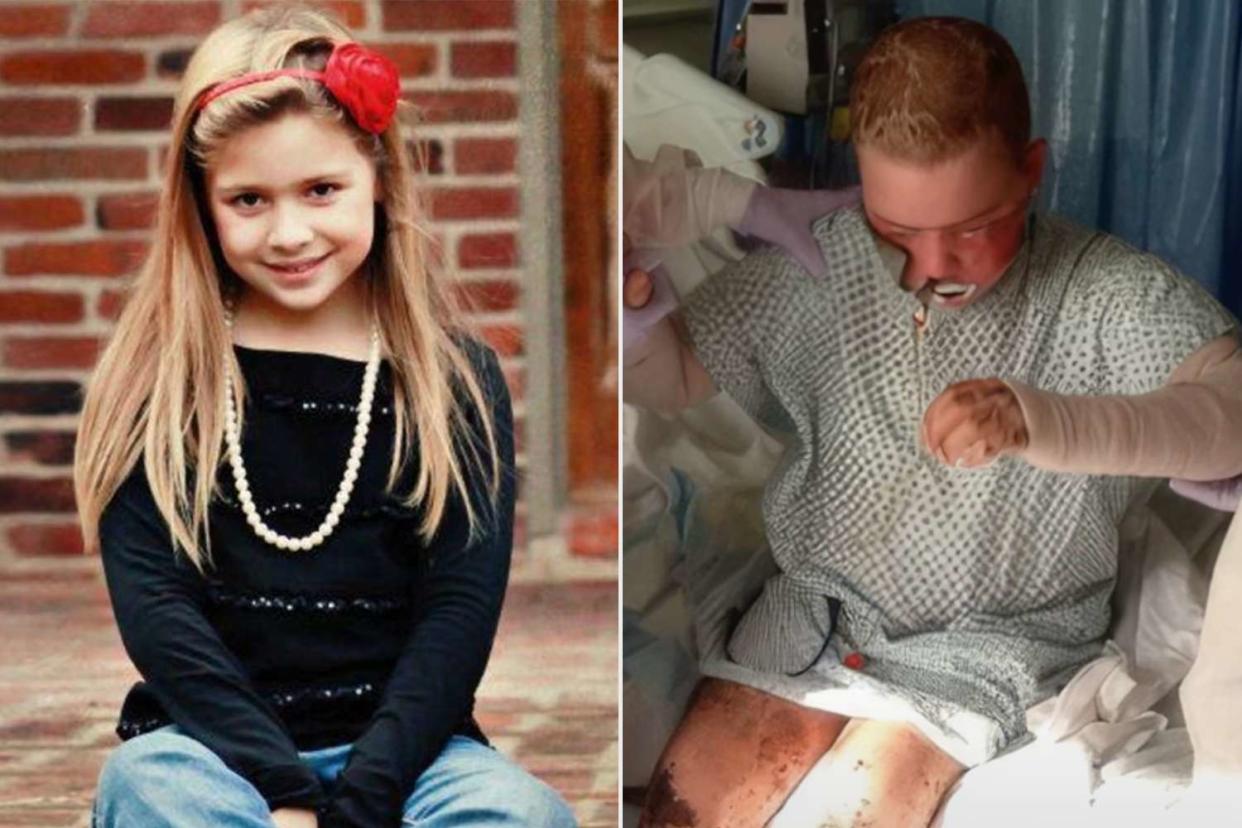
Shriners Children's
Paige LaCombeAt 8 years old, Paige LaCombe was diagnosed with a rare and life-threatening skin disease called Stevens-Johnson syndrome
The now 19-year-old recalls her yearslong recovery journey at Shriners Children’s Hospital, where she underwent more than 20 surgeries
She is hoping her story helps raise awareness about the condition, which is caused by an allergic reaction to medication
Paige LaCombe had a typical childhood in Scott, Louisiana, where she enjoyed school and extracurricular activities like soccer and dance. But everything changed for her in the second grade.
At just 8 years old, Paige started a new medication to help with breakthrough seizures for epilepsy. An allergic reaction to the medication caused a rare and debilitating skin condition that left her hospitalized and fighting for her life.
It started on March 23, 2013, when Paige woke up her parents in the middle of the night complaining of a burning and tingling sensation.
“She kept saying that she felt like she had bugs crawling on her,” her mother, Renee LaCombe, 40, tells PEOPLE. “We flipped on the lights and that’s when we realized. She had puffy lips, her eyes were completely red, her face was swollen, and she was developing what looked like a rash. Plus, she was having a really high fever.”
“We saw her and immediately rushed her to the hospital. And that's when things just went completely south,” she says.
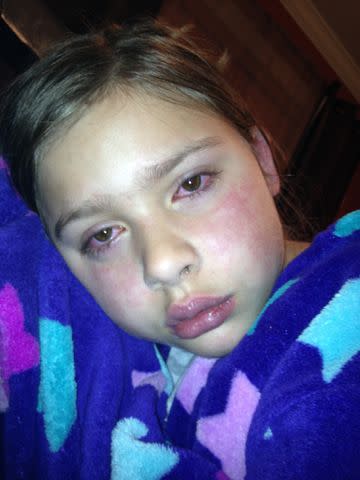
Shriners Children's
Paige LaCombe when her symptoms of SJS beganAt the hospital, Paige was initially misdiagnosed with pink eye and strep throat. Her symptoms continued to worsen but doctors were unable to figure out what was wrong.
“It was silent from the doctors. That's when I kind of knew, oh, this is not good,” Paige, now 19, tells PEOPLE. “I vividly remember thinking, ‘Am I going to die?’ Because at this point I could see my skin starting to blister. It was so scary.”
“It progressed while she was in the ER really quickly where anybody would touch her, her skin would just literally fall off,” Renee explains. “Paige was burning from the inside out. It was something that was not physically seen so by the time her skin started sloughing, she was already having all those feelings on the inside.”
As doctors struggled to provide answers, Renee turned to her sister-in-law, a nurse in Texas. Renee sent her photos of Paige and details about her condition. After extensive research, her sister-in-law believed Paige might be suffering from a skin disease called Stevens-Johnson syndrome. She recommended the family visit Shriners Children’s Hospital Galveston in Texas.
Never miss a story — sign up for PEOPLE's free daily newsletter to stay up-to-date on the best of what PEOPLE has to offer, from celebrity news to compelling human interest stories.
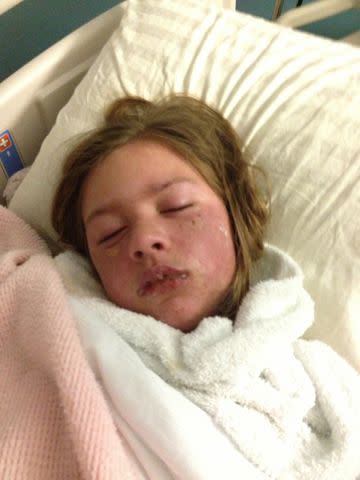
Shriners Children's
Paige LaCombe at the hospital at 8 years oldRenee approached Paige’s doctors about the possibility, but they surprisingly “didn’t align” with the diagnosis. So after three days, she made the difficult decision to get Paige discharged and transferred to the renowned pediatric burn center.
“If we would’ve stayed at the local hospital, she would not be alive,” Renee says.
And immediately after arriving at Shriners, she got answers for her little girl.
Paige’s diagnosis of Stevens-Johnson syndrome was confirmed. SJS is a rare and serious skin disorder caused by an allergic reaction to a medication.
Symptoms include a fever, sore mouth and throat, fatigue, burning eyes, red or purple rashes and blisters on the skin. As these erosions (painful open wounds that look like burns) develop, the top layer of affected skin dies and starts to shed, according to the Cleveland Clinic. The erosions typically spread to the eyes, chest, mouth, nose, throat, urinary tract, and genitals.
Related: Boy with Burns on 98% of His Body Is Now Thriving After Nearly 50 Surgeries (Exclusive)
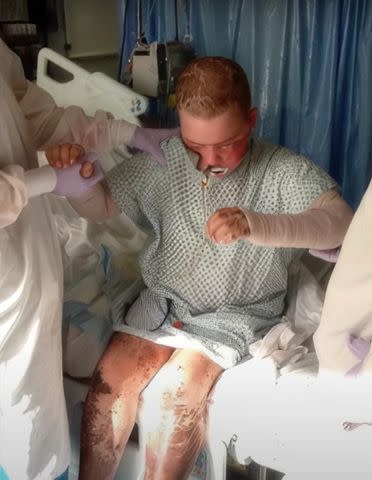
Shriners Children's
Paige LaCombe hospitalized for SJSPaige was later diagnosed with the most severe form of SJS, called toxic epidermal necrolysis (TEN), where at least 30% of the skin is affected. In her case, 80% of her body was experiencing these painful blisters. According to the National Institutes of Health, about 30% of people who develop TEN do not survive.
“I was a hot mess. I truly was,” Renee says of her daughter’s diagnosis. “The first thing that the physicians told us was, ‘This is not good, but we're going to try our best to do everything that we can.' ”
Paige admits that she was “completely out of it” due to the excruciating pain and doesn’t even remember the three-hour ambulance ride from the local hospital to Shriners. “I had no sign of relief at that point,” she says. “I blacked out for a long period of time.”
“I finally woke up after, I'm not even sure what number surgery, but I opened my eyes in a whole new environment,” she continues. “I saw my parents, saw the doctors, and looked down and saw myself gauzed up like a mummy. That was frightening but I thought, hey, I'm still alive.”
The PEOPLE Puzzler crossword is here! How quickly can you solve it? Play now!
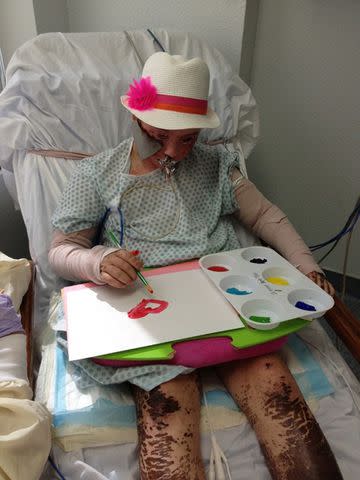
Shriners Children's
Paige Lacombe in the hospital for SJSAfter being admitted to Shriners, Paige began a seven-year recovery journey that included more than 20 surgeries. Those procedures consisted of extensive wound care including 10 skin grafts using pig skin. She also underwent 11 corneal grafts, which involved using placenta tissue and bolstering her eyes shut to prevent her from going blind.
Paige missed second grade entirely and spent third through ninth grades in and out of the hospital. Renee admits that she “still lives with the guilt today” that her daughter was suffering due to a single medication. She did everything she could to give Paige back the life she lost.
“I saw my daughter decline really, really bad where we weren't sure if she was going to make it. It was horrible. It was very overwhelming. It definitely felt like I was in Grey’s Anatomy with the amount of doctors making circles,” Renee recalls. “But I'm thankful that it was a one-stop shop at Shriners and they literally did everything that they could to ensure minimal effects once she left the hospital.”
“They were so encouraging and they helped me through everything,” Paige stresses. “Even though my darkest point in life was at Shriners, I think of Shriners like a second family. I felt taken care of. I felt loved because the staff truly worked together for the better good of the patient. I still view Shriners as not only my lifesaver but my second home.”
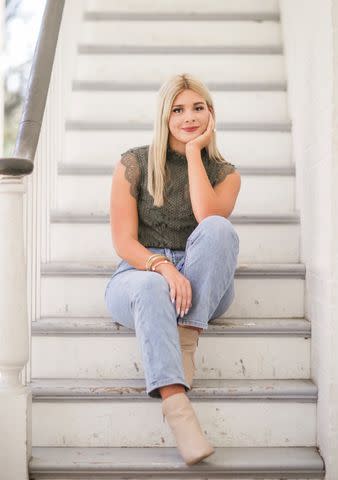
Shriners Children's
Paige LaCombe, 19, after recovering from SJSPaige has since made a remarkable recovery, saying that she’s “healed beautifully. But she’s still dealing with some lasting effects of TEN. She regularly sees an ophthalmologist to address damage to her eyes. The teen uses a daily steroid to treat the blood vessels and she wears a prosthetic device — “basically like glass contacts” — to keep her eyes hydrated, doing whatever’s necessary to mitigate the risk of her becoming blind.
Additionally, because of the scar tissue that has developed, doctors say they don't know if Paige will be able to have children.
“I’m blessed to be alive,” says Paige, now a patient ambassador for Shriners Hospital. “Some days I have bad days with my eyes, but I can't complain. I'm very thankful to be here today.”
“It's been a journey. Stevens-Johnson syndrome is horrendous and most don't survive from this,” her mother adds. “Poor thing, this child is a miracle. She’s been through hell and back. We're unsure of motherhood and we're unsure of her vision. But right now she's thriving. It's amazing how she finally turned the corner.”
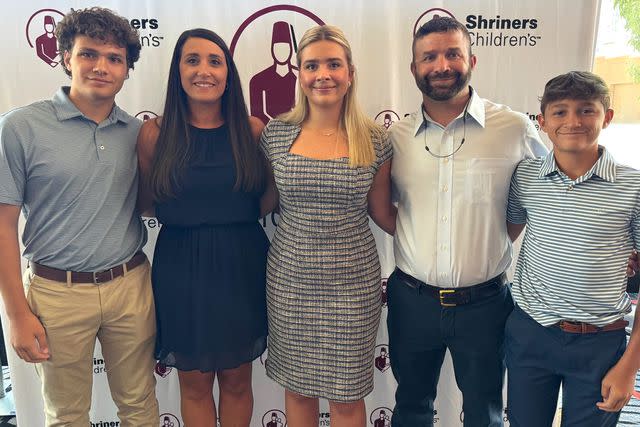
Shriners Children's
Paige LaCombe with her familyRelated: What to Know About Jay Leno's Burn Treatments and Skin Grafting Procedure
Today, Paige is a sophomore at South Louisiana Community College pursuing a degree in business management and marketing. Calling herself a social butterfly, she’s excited to feel a “sense of normalcy” being around her peers without visiting doctors every other day.
Additionally, both Paige and Renee want her story to help raise awareness about SJS and TEN, telling PEOPLE that they’ve been able to connect with other families navigating the disease.
“I hope that people take the time to maybe learn and educate themselves before they take a medication to not end up in this position,” Paige says.
“Educate before you medicate,” Renee stresses. “Ask the questions with your doctors, educate yourself. Don't feel intimidated with physicians. Know more about what some risks to taking medications are. Every day, I beat myself up for not asking more. So I have tried my hardest to turn this negative event in Paige's life into something positive.”
For more People news, make sure to sign up for our newsletter!
Read the original article on People.
